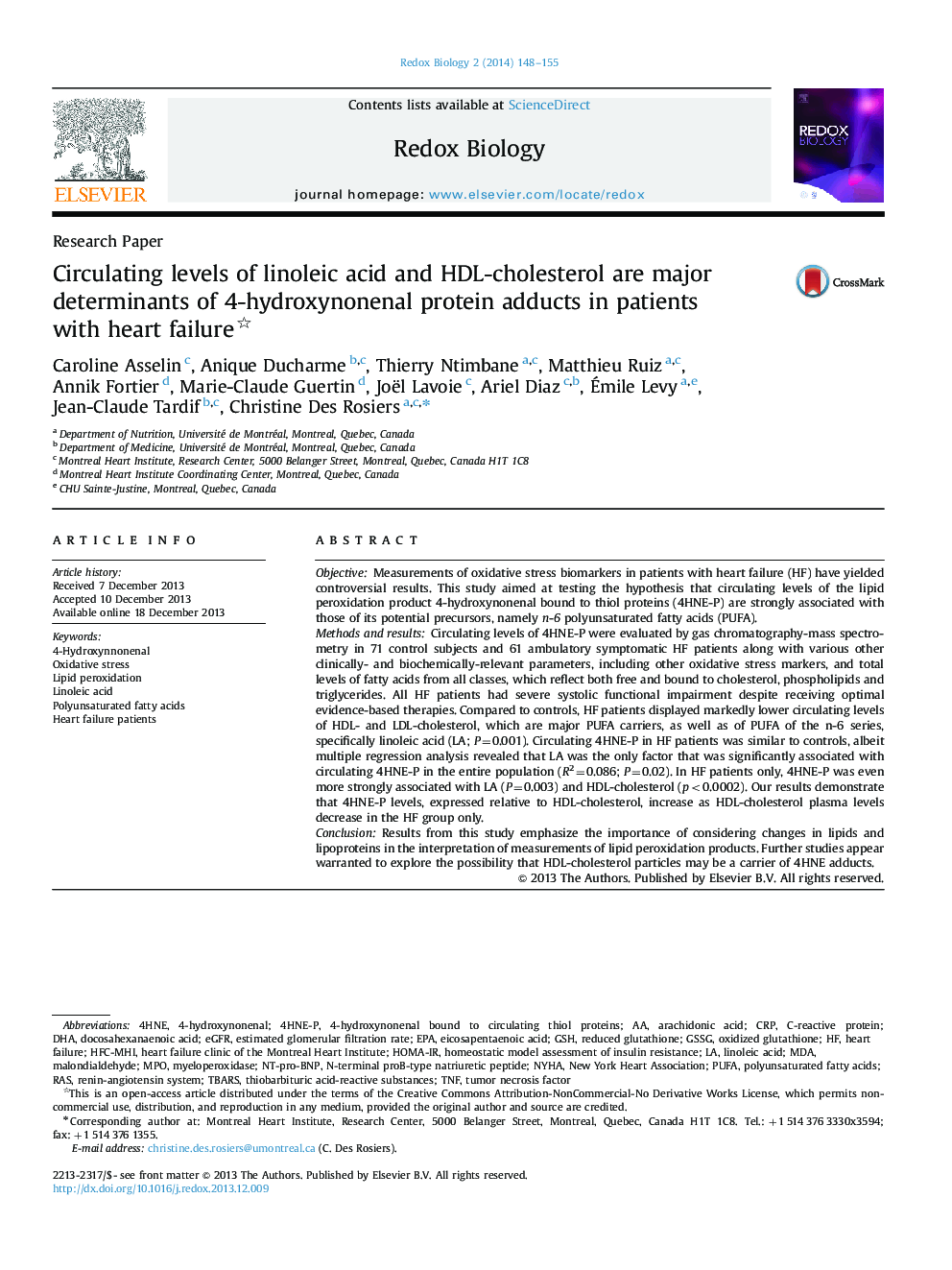| کد مقاله | کد نشریه | سال انتشار | مقاله انگلیسی | نسخه تمام متن |
|---|---|---|---|---|
| 1923012 | 1535848 | 2014 | 8 صفحه PDF | دانلود رایگان |

• Peroxidation of n-6 polyunsaturated fatty acids (PUFA) forms 4-hydroxynonenal (4HNE).
• Heart failure (HF) patients have lower plasma levels of n-6 PUFA linoleic acid (LA).
• Blood levels of 4HNE bound to proteins (4HNE-P) in HF patients are similar to controls.
• 4HNE-P levels are associated with those of LA in the entire population (p<0.02).
• 4HNE-P levels are strongly associated with LA and HDL-cholesterol in HF patients.
ObjectiveMeasurements of oxidative stress biomarkers in patients with heart failure (HF) have yielded controversial results. This study aimed at testing the hypothesis that circulating levels of the lipid peroxidation product 4-hydroxynonenal bound to thiol proteins (4HNE-P) are strongly associated with those of its potential precursors, namely n-6 polyunsaturated fatty acids (PUFA).Methods and resultsCirculating levels of 4HNE-P were evaluated by gas chromatography-mass spectrometry in 71 control subjects and 61 ambulatory symptomatic HF patients along with various other clinically- and biochemically-relevant parameters, including other oxidative stress markers, and total levels of fatty acids from all classes, which reflect both free and bound to cholesterol, phospholipids and triglycerides. All HF patients had severe systolic functional impairment despite receiving optimal evidence-based therapies. Compared to controls, HF patients displayed markedly lower circulating levels of HDL- and LDL-cholesterol, which are major PUFA carriers, as well as of PUFA of the n-6 series, specifically linoleic acid (LA; P=0.001). Circulating 4HNE-P in HF patients was similar to controls, albeit multiple regression analysis revealed that LA was the only factor that was significantly associated with circulating 4HNE-P in the entire population (R2=0.086; P=0.02). In HF patients only, 4HNE-P was even more strongly associated with LA (P=0.003) and HDL-cholesterol (p<0.0002). Our results demonstrate that 4HNE-P levels, expressed relative to HDL-cholesterol, increase as HDL-cholesterol plasma levels decrease in the HF group only.ConclusionResults from this study emphasize the importance of considering changes in lipids and lipoproteins in the interpretation of measurements of lipid peroxidation products. Further studies appear warranted to explore the possibility that HDL-cholesterol particles may be a carrier of 4HNE adducts.
Figure optionsDownload as PowerPoint slide
Journal: Redox Biology - Volume 2, 2014, Pages 148–155